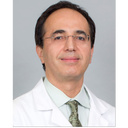I had Rhinoplasty one month ago. I have scabs on the inside of my nostrils and they are very uncomfortable. I was told to use peroxide and q-tips but it does not help. I feel stuffy because the scabs make it hard to breath. Is this normal?
Answers (29)
From board-certified doctors and trusted medical professionals
More Rhinoplasty Questions
See all Rhinoplasty Q&AWE SEND PRETTY
EMAILS
What’s trending? Who’s turning heads? Which TikTok myths need busting? We’ve got you. No fluff, no gatekeeping—just real talk. Get our free, unfiltered newsletter.









